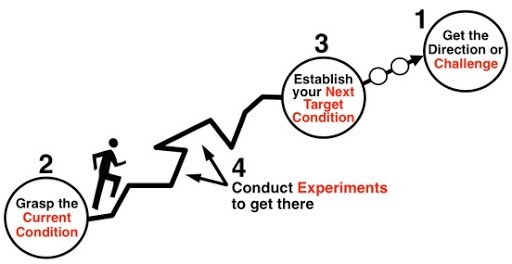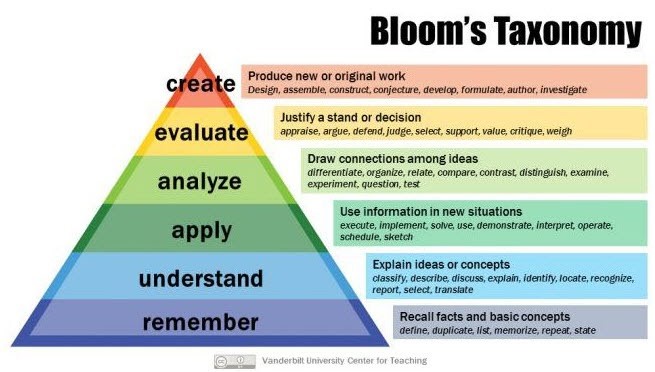Helping Our Puppy to "Bloom"
I remember very well the conversation with my wife…”Let’s get a new dog!” “Dogs are a lot of work, especially puppies…,” like it was yesterday. Personally, I’ve raised one puppy prior, but my wife had no experience in this arena. With cuteness winning over caution, our little “Hazel” came home on November 18th. A cute 7-week old pup, more sleepy than active, she was a docile canine parents’ dream - for a while. If you have owned a pup, you know the brevity of the honeymoon phase. As I write this we are still counting age in weeks rather than months, and we are all quickly learning. My role with our pup centers on coaching my wife to take the lead and learn how to be our family’s guide for developing our pup. The challenge is, neither of us really knows the pathway to develop our specific pup into the wonderful dog that she can be, the wonderful dog that we have to learn to draw out into our world....

As I considered the right pathway to coach toward, I considered many options, including the excellent article by my colleague Matt Raborn on change management with his own pup. I recognize that all of you reading this are solving much more important and complex problems than simple puppy obedience, but there is something fundamental in the approach that allows us to succeed or fail in helping others (individuals or organizations) succeed. I want to connect two things you may have heard of, in a way you likely have not heard.
Toyota Kata
The first, Toyota kata, codified by Mike Rother’s seminal work published in 2009, can be summarized as the learning of how to apply the scientific method by following patterns. Katas are patterns, and if we follow a pattern we can learn skills by practical application, not theoretical consideration. Composed of the Improvement and Coaching katas, Toyota kata provides guidance to:
- Understand the direction or challenge
- Grasp the current condition
- Establish your next target condition
- Conduct experiments to get there
I’ve used this pattern-based teaching for years and have seen excellent results. I find one of the most challenging skills in this work is in setting the next target condition. A target condition that is too easy requires little learning and a team may simply tweak their work. Conversely, a target condition that is too challenging may yield a team that “shuts down” because it’s too difficult to imagine where to start. Setting a target that is both challenging and attainable is key. A target condition that requires experimentation to achieve the target ensures team learning and competency development with scientific method. The question for me has always been - what can guide my thinking when setting target conditions? Surely talent is enough for some, but I’ll offer there is another solution to consider.

Bloom's Taxonomy
The second, Bloom’s taxonomy, created by Benjamin Bloom in 1956, outlines the hierarchical order of skill development. It can be applied in any sector, and if you have an education background you are sure to be familiar with the taxonomy. The taxonomy outlines 6 major categories: Remember; Understand; Apply; Analyze; Evaluate; and Create. Moving from simple to complex, the taxonomy outlines the pathway from merely being aware of a concept or idea, to being able to use the idea to generate new and original work.

Bringing Kata and Bloom’s Together toward Operational Excellence
Great information you may say, but where is the connection? In order for an organization to attain operational excellence, it is equally important that team members learn HOW to solve problems as it is to solve the problem at hand. How we do something is as important as the result, which means we must develop team capabilities.
The scientific method gives us the pattern to follow to help build capability, but the key to effectively setting target conditions is to consider the capabilities of the team solving the problem. Is that team simply trying to remember the basic steps of the scientific method? Are they advanced in experimentation and applying the scientific method to many different complex problems? By using the taxonomy to evaluate where on the spectrum the team is in their problem-solving capability, we now are more informed to set a target condition that is equally challenging and attainable.
I started with the story of a puppy. That puppy has been the trigger for many experiments. One example - we were unsure if she would ring a bell to alert us that she needed to go outside. We needed to start with helping her “remember” to ring the bell as she went outside. Building her memory to alert us by the bell led to experiments - one of us rings the bell each time she went out, touching her nose to the bell each time she went out, putting a treat behind the bell and saying “bell” each time she went out, etc. We tried many experiments with the bell and other skills. At four weeks as part of our life, Hazel has learned to ring a bell to signal she needs to go out, she can sit, stay, come when called, and even knows not to chase the cat up onto the couch.
For Hazel to learn all of these skills, we needed to recognize her skill level and understanding of a concept we were trying to teach. Once we had a hypothesis of her understanding/skill and a potential solution, then we could experiment to learn if our hypothesis was true. When she first arrived, she didn’t know or even have the ability to remember her name. Now, she understands the process for going out and is applying it in her own creative ways, like ringing the bell to go out to eat snow at 2 a.m. (not really the target condition!).
Steps You Can Take
When coaching your team and developing their skills, consider the use of Bloom’s taxonomy to guide your understanding of your team’s capabilities. Then, with this knowledge, set challenging and attainable target conditions for them to accomplish and provide a pattern for them to practice scientifically solving problems. Combining the two, will enable them to learn their way to new levels of ability.
Learn More
To learn more, please contact us by completing our form, "Talk With Us," in the sidebar on this page, or contact Bill Boyd directly at bboyd@valuecapturellc.com. To study Toyota kata, you can learn more here. To learn more about Bloom's Taxonomy, you can click here.

Written by Bill Boyd
Bill Boyd serves as Value Capture's Chief Operating Officer, and is responsible for business operations and overseeing all support functions. He is a seasoned healthcare professional with over a decade of practice integrating process improvement methodologies into how he leads. He is passionate about collaborating with healthcare teams to create better care experiences and outcomes for patients and families. Full Bio

Submit a comment